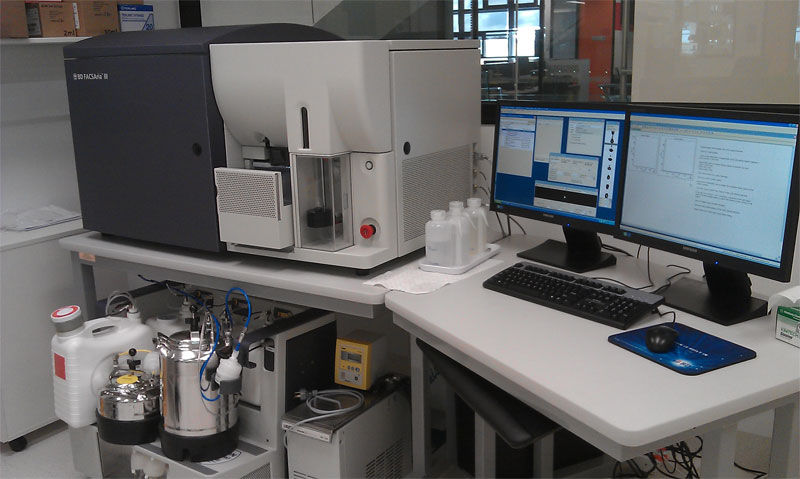What the FACS?
- Sara Subbanna
- Apr 27, 2017
- 2 min read

Today we will be talking about fluorescence-activated cell sorting, better known as FACS. In previous posts I have talked about how qPCR works, and how it can detect the level of expression of a gene in a certain group of cells. qPCR is an incredibly useful tool, but it has an important limitation -- it can only work with large numbers of cells not individual cells. That is where FACS comes in. The FACS machine takes a population of cells and pushes them through a thin stream of buffer one at a time, flashes a laser on each cell, and marks how much the cell "glows" when exposed to the laser. How, one might ask, could that possibly track gene expression? On normal cells, it would not. A cell would have to contain a florescent protein in order for it to glow under the laser. Therefore, scientists have to specifically design these cells.
The designing of the cell is a complicated process. The scientist's goal is to make the cell glow when that gene is being expressed, so they "knock" the gene into the cell's DNA. To give you some background, humans are diploid, meaning they have two copies of each gene. When the cell need to express a gene, it reads both copies of the gene. Scientists don't want to lose the functionality of the gene, but they do want to make the cell glow when the gene is being "read" so they employ a neat trick. They replace one copy of the gene with a gene for a florescent protein, so the cell creates the protein and a glowing material when "reading" the gene. They can then take a population of the cells and run them through the FACS machine to determine what percentage of cells express that gene. This test is important to test the purity of the sample. We recently used the FACS machine to test if our embryonic stem cells were transforming into definitive ectoderm, and to our great pleasure, most of them were!


Comments